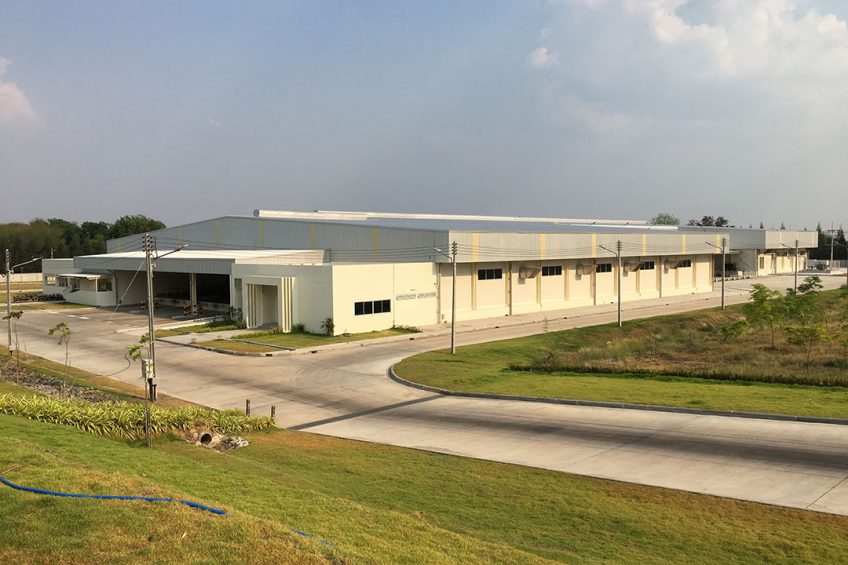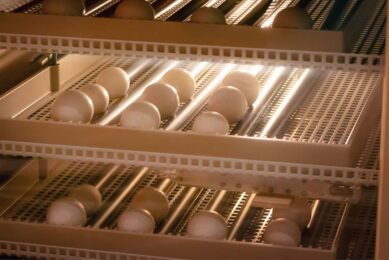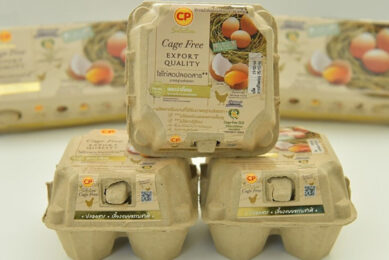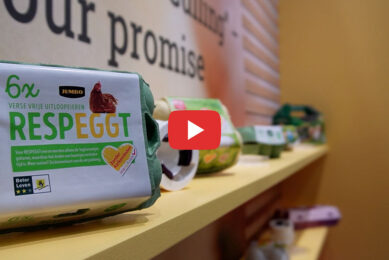Accuracy improves hatching results

In running a hatchery with a capacity of 2 million eggs a week, it is the small improvements that make all the difference. Pornthep Chongkol, manager of the Betagro hatchery in Chaibadan Thailand has an eye for detail and walks Poultry World through his facility.
The Chaibadan facility is the latest addition to Betagro’s hatchery inventory and came into production in July 2018. The hatchery is situated in Lopbuli province, about 4 hours’ drive north of Bangkok and in the middle of one of Thailand’s major poultry producing areas. It really is an area buzzing with poultry farming, but the Chaibadan facility was commissioned as a brand new greenfield hatchery on an empty plot in a corner of a tourist resort. With plenty of space and distance from existing poultry operations, this made the basics of biosecurity easy to implement. “In a good hatchery, biosecurity is the basis of all,” acknowledges Mr Chongkol, manager.
The facility operates with a two zone biosecurity plan. The outer zone, the fenced off perimeter of the facility, is only accessible after showering and decontamination. All 137 staff members of the hatchery only enter this zone, which also incorporates a housing unit and canteen, once every 24 days, after which they are allowed 6 days to spend with their family. Contact with non-commercial poultry in backyard farms is kept to a minimum. The inner zone is the hatchery building itself, also only accessible after showering. On top of that, personnel are assigned to a certain zone within the building and not allowed to leave their designated zone, thus preventing cross contamination. Mr Chongkol: “Crossing zones is only allowed if there is an actual reason for it and not without decontaminating boots and hands.”

Next step
In building a brand new hatchery instead of expanding one of the three existing facilities, Betagro was able to set the next step in efficiency. The new hatchery, has taken full advantage of Dutch supplier Pas Reform’s position as a single-
source, fully integrated supplier of incubation, climate control and hatchery automation. Fifty-four SmartSetPro setters with a maximum setting capacity of more than six million hen eggs incorporate modular design. The setters are complemented by 54 SmartHatchPro hatchers. Hatchery operations are fully supported by Pas Reform’s SmartCenterPro hatchery information system at every level, providing end-to-end real-time monitoring, control and reporting, to enhance workflow efficiencies and quality control and deliver complete traceability for every hatch. Mr Chongkol on the investment: “Our company invested in an extension of one of our existing hatcheries with SmartPro in 2014. That was our first step in moving from multi stage to single stage incubation. When we saw the improvements in efficiency, the new hatchery was planned accordingly.”

Full integration
The new hatchery is the first of the Betagro facilities to pay special attention to egg handling. It chose the fully integrated Prinzen Ovoset Pro machine for setting the eggs point down and the Prinzen trolley loader to lighten the workload of the personnel. Mr Chongkol: “We hatch six days a week, handling more than 300,000 eggs a day. Automation is key, because personnel cannot keep up with those numbers and stay on top of their game at the sametime.” In the end it is all about accuracy and better results. Point setting is extremely important to get the most out of the hatching process. The Chaibadan hatchery is supplied by six breeder farms with 128,000 birds in 16 houses each. About 50% has Cobb birds and the other half are Hubbard flex. The farms are all managed from the hatchery, making sure that there is a 13 week difference in bird age between the farms. Parent stock produce until 66 weeks. “This way we guarantee a year round continuous supply of eggs to the hatchery,” says Mr Chongkol.

The eggs are collected by hand, graded and fumigated on farm. After that they are delivered on plastic trays per 30 to the hatchery.
“In the old days we would transfer and set the eggs by hand, managing about 3,500 eggs per person per hour. With two Ovoset machines we manage 60,000 eggs per hour. On top of that there is more quality too,” Mr Chongkol says. Data shows that setting by hand has a failure percentage of 5%, opposed to 0.3% by the machine. About 20% of the wrongly set eggs will not hatch, 80% will result in less vital chicks. “It is all about the numbers, with over 100,000,000 eggs a year the difference between the machine and by hand is 3.7%, of which 20% is a loss. Small percentages add up to 740,000 chicks as a potential loss/win. On top of that we keep our staff happy too.” The current hatching percentage is 84%.

Labour intensive
Automation in egg setting and also in the transfer room, where candling and selection is also automated, keep the number of people involved in the hatchery low. Mr Chongkol: “That said, the work in the chick room is still pretty labour intensive. About 60% of all our staff is employed there. That is mainly due to the fact that we separate the male and female birds and vaccinate every chick by hand as well as with spray vaccination. On top of that, all our birds are re-checked as a matter of quality control, before they leave to the broiler farms. Vaccination failure is not an option and if we see mistakes, the quality control station will evaluate the individual person at the vaccination station.”

Chick sexing is done for better results on the broiler farm level. Female chicks grow to 2.2 kilo’s in 42 days, male chicks to 2.8 kilo’s in 48 days. That gives better uniformity at the processing facility and thus better processing efficiency. With Betagro being a fully integrated company, from parent stock until finished products under its own brand name in the supermarket, every step in the production process is important. Mr Chongkol: “Our hatchery process is probably the most critical step in the whole production process, but in the end it is all about all links in the supply chain working together.”
Join 31,000+ subscribers
Subscribe to our newsletter to stay updated about all the need-to-know content in the poultry sector, three times a week. Beheer
Beheer








 WP Admin
WP Admin  Bewerk bericht
Bewerk bericht